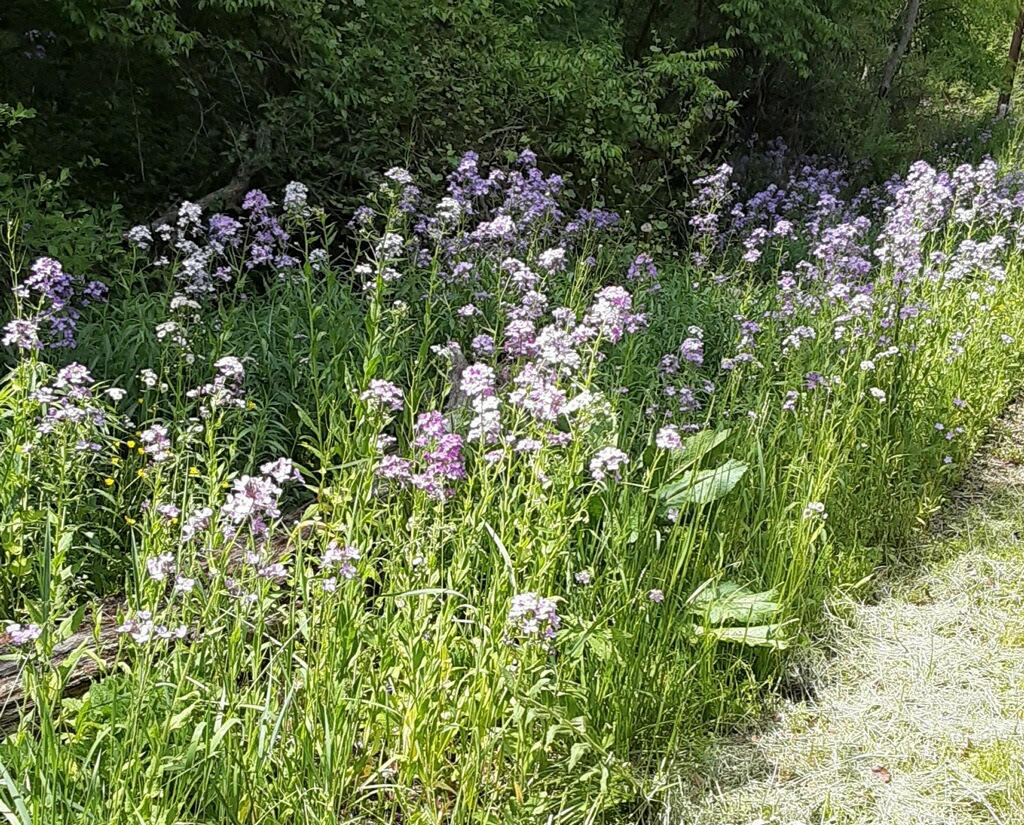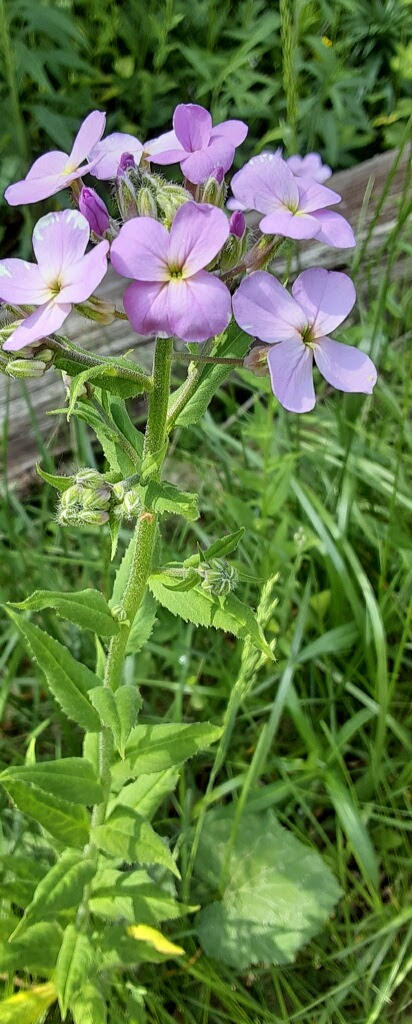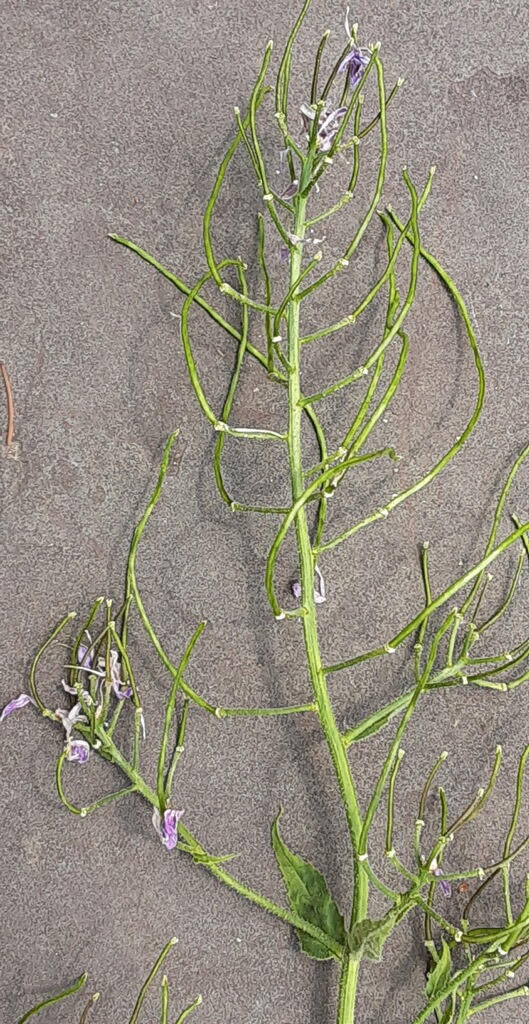By Susan Sprout
Dame’s Rocket, a member of the Mustard Family, is a biennial or perennial flower brought to North America from the mother country by colonists who loved the sweet aroma of its flowers. You may know it by a different name – I have found fourteen so far! I used Dame’s Rocket because that seems the most common one in plant identification books. Mother of the Evening is a lovely name for pretty flowers that refuse to give out their perfume until evening. The scientific name speaks to both ideas – Hesperis refers to evening when the sun sets in the west, and matronalis which was a Roman holiday to celebrate married women and held in honor of Juno, who was thought “to bring children into the light” as the goddess of childbirth. Brought to North America as a garden flower, Dame’s Rocket has made well its escape into the wilds for it now grows freely from Newfoundland to the North Georgia Mountains!

From a distance, it can be misidentified as one of several kinds of Phlox that grow in the area. On closer inspection, petal number is key to correct identification. Phlox has five petals, and Dame’s Rocket has four petals on each flower. After fertilization, a long, thin seed pod known as a silique will form. When it dries and breaks open along its two seams, two rows of seeds will empty out. This type of seed pod is a characteristic of many plants in the Mustard Family. I think that may be why they are so plentiful along the roads and wood edges where I have been seeing them.

Leaves also help identify Dame’s Rocket. They grow alternately on the three-foot tall plant stem. Leaves nearer the top are smaller and more closely attached to the stem than the lower ones which can reach four inches in length. The toothed edges resemble a steak knife! Leaves and the stem have small hairs on them. I hope the rain we finally received did not wash away their petals before you get a chance to look for them. That could really affect the petal count!


